Videos
 Un curso de creatividad, Tina Seelig, Universidad de Stanford (subtitulos en español)
Un curso de creatividad, Tina Seelig, Universidad de Stanford (subtitulos en español)
.
 Olvida lo que sabes, Jacob Barnett, Universidad de Princeton (subtítulos en español)
Olvida lo que sabes, Jacob Barnett, Universidad de Princeton (subtítulos en español)
.
Conceptos Claves
El modelo de “Innovation Engine”
Lectura:
Extracto de inGenius
Chapter 1: Ideas Aren’t Cheap, They’re Free
Until recently, prospective students at All Soul’s College, at Oxford university, took a “one-word exam.” They each flipped over a piece of paper at the same time to reveal a single word. The word might have been “innocence” or “miracles” or “water” or “provocative.” Their challenge was to craft an essay in three hours inspired by that single word. There were no right answers to this exam. However, each applicant’s response provided insights into the student’s wealth of knowledge and ability to generate creative connections.
This challenge reinforces the fact that everything—every single word—provides an opportunity to leverage what you know to stretch your imagination. For so many of us, this type of creativity hasn’t been fostered. We don’t look at everything in our environment as an opportunity for ingenuity. In fact, creativity should be an imperative.
Creativity allows you to thrive in an ever-changing world and unlocks a universe of possibilities. With enhanced creativity, instead of problems you see potential, instead of obstacles you see opportunities, and instead of challenges you see a chance to create breakthrough solutions.
Sadly, there is also a common and often-repeated saying, “Ideas are cheap.” This statement discounts the value of creativity and is utterly wrong. Ideas aren’t cheap at all—they’re free. And they’re amazingly valuable. Ideas lead to innovations that fuel the economies of the world, and they prevent our lives from becoming repetitive and stagnant. As the renowned American inventor Alan Kay famously said, “The best way to predict the future is to invent it.” We are all inventors of our own future. And creativity is at the heart of invention.
After a dozen years teaching courses on creativity and innovation, I can confidently assert that creativity can be enhanced. This course will focus on specific tools and techniques that enhance creativity in individuals, teams, and organizations. We will look at ways to increase your ability to see opportunities around you, to connect and combine ideas, to challenge assumptions, and to reframe problems. We will explore ways you can modify your environment to enhance your creativity and the creativity of those with whom you live and work. In addition, we will look at the ways your motivation and mind-set influence your creative output, including your willingness to experiment, your ability to push through barriers to find creative solutions to daunting challenges, and your skill at turning off premature judgment of new ideas.
It is important to understand that these factors fit together and profoundly influence one another. Therefore, none can be viewed in isolation. I’ve created a model—the innovation engine – that illustrates how all these factors work together to enhance creativity. They are described in detail in the video above.
The three parts on the inside of your innovation engine are knowledge, imagination, and attitude:
- Your knowledge provides a toolbox for your imagination.
- Your imagination is the catalyst for the transformation of knowledge into new ideas.
- Your attitude is a spark that sets the innovation engine in motion.
The three parts on the outside of your innovation engine are resources, habitat, and culture.
- Resources are all the assets in your community.
- Habitats includes the people on your team, the rules, rewards, and the physical space.
- Culture is the collective beliefs, values, and behaviors in your community.
There is a recurring theme: creativity is not just something you think about—it is something you do.
Hay un tema recurrente: creatividad no es sólo algo que piensas, es algo que haces
Tarea
Diseñar la portada del libro de tu vida relacionado con Fisicoquímica para Ingenieros Químicos.
Requerido: Crear una portada de un libro que represente quien eres, incluyendo imágenes y un título.
Opcional: Realizar el cuestionario “Via Survey” para determinar cuales son las fortalezas en el carácter que predominan y cuales pueden mejorar y publicar en el grupo de facebook junto con la portada, cuales son las cuatro primeras y las cuatro últimas “character strenghts ” de su encuesta. Para realizarla en el enlace http://www.viacharacter.org/www/ pulsas el botón “take the free VIA survey” te registras y realizas la encuesta, está en español.
Instrucciones especiales:
Sube al grupo de facebook una imagen digital de la portada. Esté seguro que el archivo es de menos de 2 MB. Adicional: colocar las cuatro primeras y cuatro últimas fortalezas del carácter de tu encuesta.
Fecha de publicación los días viernes 2 a domingo 4 de mayo.
La actividad tendrá los dos puntos sobre la calificación del 2do examen si tiene cinco “me gusta” entre el viernes 2 y el viernes 9 de mayo en el grupo de Facebook.
Usa esta tarea como una oportunidad para la autoreflexión, creatividad, y una forma de compartir algo de tu vida con la clase.

 orcid.org/0000-0001-6003-7487
orcid.org/0000-0001-6003-7487







 - ULA
- ULA Guia de Alta Montaña
Guia de Alta Montaña Industrial Chemistry – Texas A&M
Industrial Chemistry – Texas A&M Laboratorio FIRP
Laboratorio FIRP Materials Learning – Cambridge Univ.
Materials Learning – Cambridge Univ. Petroleum Refining – Colorado Univ.
Petroleum Refining – Colorado Univ. COLMEQUIM
COLMEQUIM BIOVEN
BIOVEN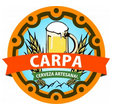 CARPA
CARPA GUMMYN
GUMMYN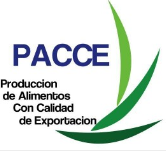 PACCE
PACCE PharmaQuim
PharmaQuim PRODELIM
PRODELIM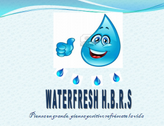 WATERFRESH
WATERFRESH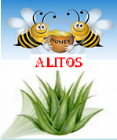 ALITOS
ALITOS Biocosmetiq's
Biocosmetiq's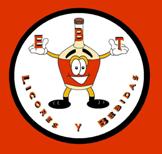 E.B.T. Bebidas y Licores
E.B.T. Bebidas y Licores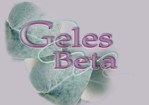 GELES BETA C.A
GELES BETA C.A NatuVie
NatuVie Productos de Gel de Aloe Vera
Productos de Gel de Aloe Vera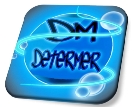 Determer
Determer PECTIPRODS Mérida
PECTIPRODS Mérida PETROING C.A.
PETROING C.A. Soft&Pure
Soft&Pure ALQUIVEN C.A.
ALQUIVEN C.A. Deshoil C.A.
Deshoil C.A. Ecopetroliq’s
Ecopetroliq’s Pequinoil S.A
Pequinoil S.A PetroCrack CA
PetroCrack CA Petrol C.A.
Petrol C.A. REFILUB
REFILUB